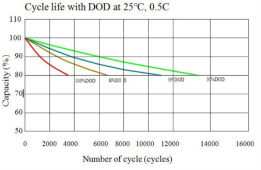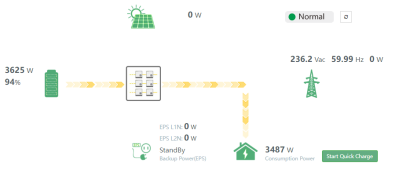My batteries are not work horses. I live on the grid in Panama and there is
no time of use penalty or savings. Electricity is expensive in Panama and more than most US states, so the solar power system has significantly reduced my electric bill. Currently, I seem to be producing more electricity than I am using. I imagined that will change when I buy an electric car.
We do have frequent power outages, usually < hour, usually not over 6 hours and probably only about 15 hours/month in total. Usually the longer power outages is where the power is shutdown during the day for maintenance from 9-4pm. My main reasons besides saving on utility cost is to prepare for an extended outage, since there seems to be so many events occurring around the world with hurricanes, tornados, tsunami, earthquakes, floods, fire, extreme heat, volcanos, storms, lightning, wars, riots, etc.
I have installed a whole house backup system using (2) Luxpower 12K hybrid inverters, (2) GSL 52V 14.3K 280Ah 16 cells powerwall batteries and 28.6K solar panels. I am not expecting 24/7 power, but I would like for my family to have some power during an event.
System was installed in June so I am still learning about batteries that were installed as an EPS (emergency power system). I found this chart for Lifepo4 or LFP batteries.

GSL battery requires DOD 80% max, so that is not an issue and probably would not occur more than once a month anyway without an event. Most power outages are less 30% DOD. The chart is based on 0.5C which for my battery is 140A and my batteries are rated at 150 continuous charge/discharge current. I have set my batteries at 100A or only 0.35C. I understand that a lower C reduces degradation from heat from charging and extends the battery life.
Luxpower inverters has a mandatory SOC=90 upper limit when on-grid power, so my batteries are discharging to 90%

During the day I can use Charge First and my solar panels will keep the batteries at full charge from about 8AM till 7PM. During the day my BMS floats the batteries from 100% to about 98%. After 5PM my solar production drops significantly, but it is enough to qualify as being not fully on-grid. Once fully on-grid my batteries will discharge to 90% and float at 90% until recharged in the morning by the solar panels to 100%. At night my EPS will have less charge, but should be adequate. This is acceptable to me, since batteries always fully charge can cause problems like cell balancing, electrons migration, etc., which over time can also cause battery degradation.
AT 8:54 we just loss power and my alarm is sounding. Not too bad, the grid was back in only 2 minutes.
According to the chart that I attached, DOD=80% increases number of cycle to 6500 cycles and DOD=100% reduces battery number of cycles to 3500 cycles. This graph is only an example and not for all LFP batteries, you need to get the proper graph for each battery. It only illustrates the concept that less DOD increases the number of cycles.
I do want to extend my battery life to the warranty period of 15 years, so that I have batteries should a disaster hit Panama. These are my first batteries, so I know nothing about batteries. What little knowledge I have is not from experience, but is limited to internet research and yes, I have read the battery manual. I found your thread and you DIY guys seems to have the experience that I don't. Have I missed something?
Like other people, I do tend to overthink things.





